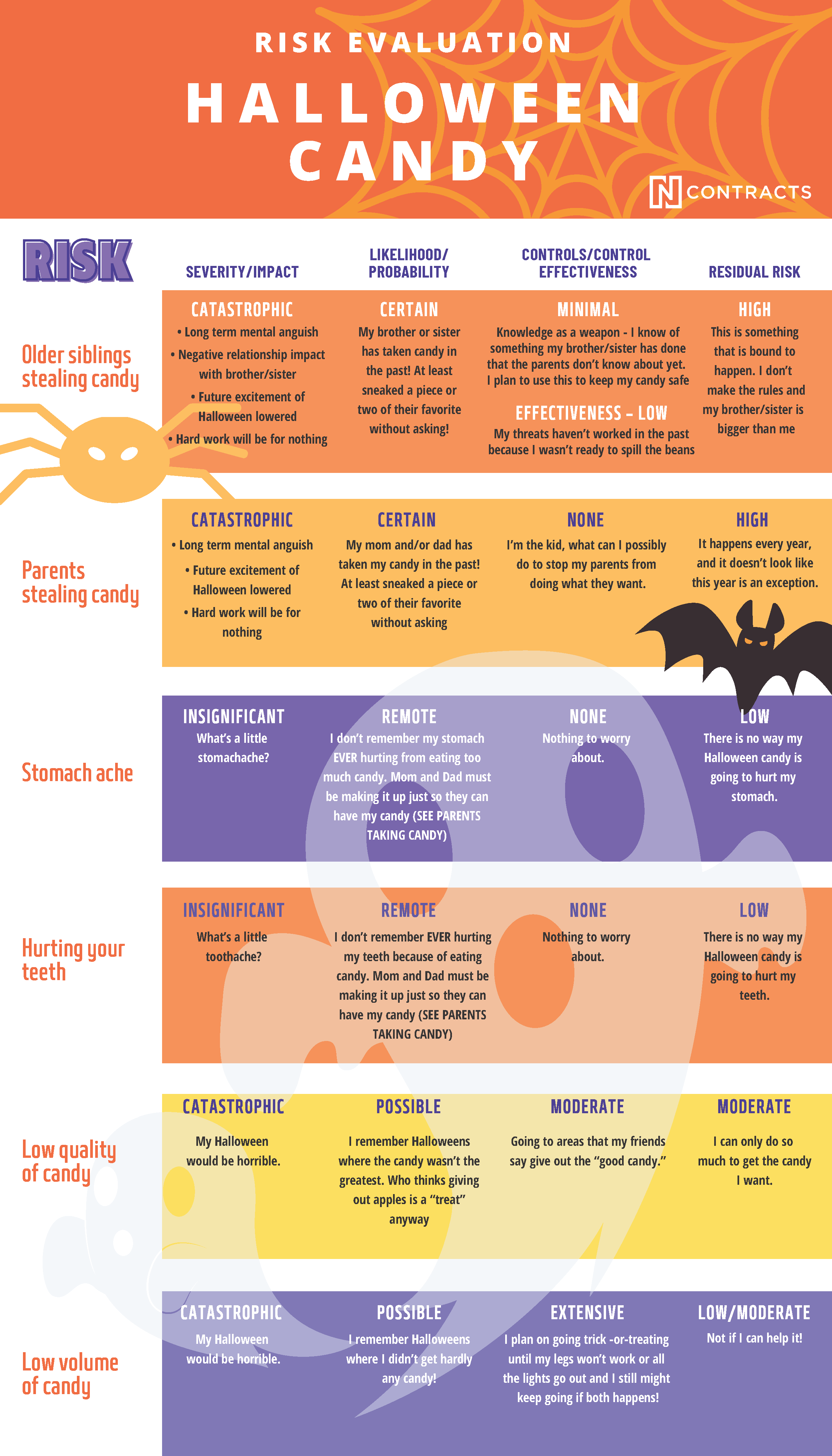There’s something about the magic of Halloween that delights children. I can still remember the thrill of running door to door, my sneakers crunching through fallen leaves as my pillowcase grew heavy with candy loot.
Did I think about risk then? The answer is certainly yes, but not in the way I do today. I didn’t rate risks or think about the things I did to control risk. But I did understand what “risks” meant to me and my precious candy treasure.
In this trip down memory lane, I’ll attempt to formalize the risk and controls children across America face when it comes to their Halloween candy, arriving at residual risk.
As with any risk assessment, it begins with the basic risks. In this case, it’s all about the candy collected. Getting in touch with our inner eight-year-old, we need to think about how the risks to our candy will affect us, how likely is it that we’ll feel the effects of those risks, and what we can do about the “left-over risk” (residual) we face.
Risks identified for this assessment include:
Candy thieves
Crummy candy
Quantity
Binge eating candy
Severity/Impact:
What does the risk mean to us?
Children view risk and its effects differently than adults. For each risk, we’ll think about how the impact of each risk would make a child feel and use that to weigh risk.
Probability/Likelihood:
How real is the risk? What’s the chance it will happen?
We have an idea of the impact of the risk, but how likely is it that the risk will even happen? A child would think about what happened during past Halloweens and their friends’ experiences.
Controls/Control Effectiveness:
What to do about the risks? Does what we do even work?
Knowing the risks, their impact, and their likelihood, the child needs to think about what, if anything, he can do to decrease risk.
Residual Risk:
What amount of risk is left?
After all the analysis, the child should know exactly what level of risk he faces. Then he needs to decide if it’s an acceptable amount of risk or if he should consider additional controls. A decision needs to be made. Is the reward even worth the risk?
Silly question, of course. The reward of all that sweet, sweet candy is definitely worth suiting up for another Halloween trick-or-treat adventure when you’re a kid!
